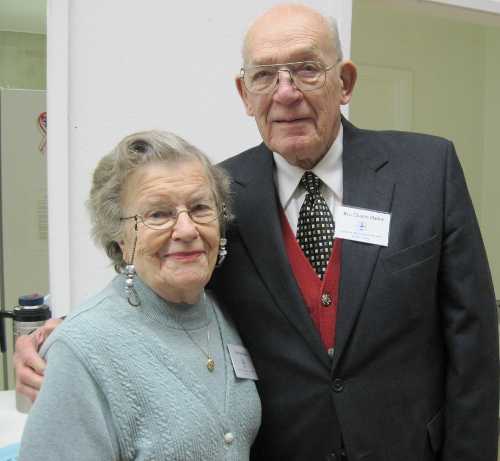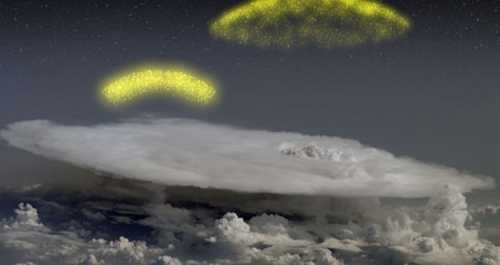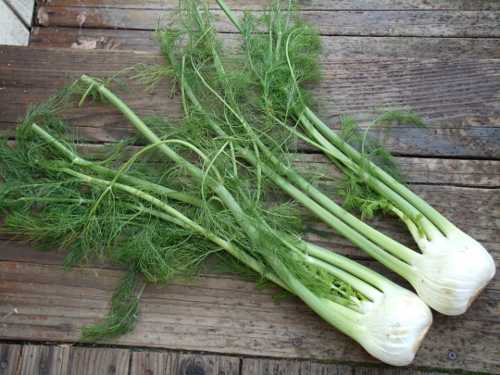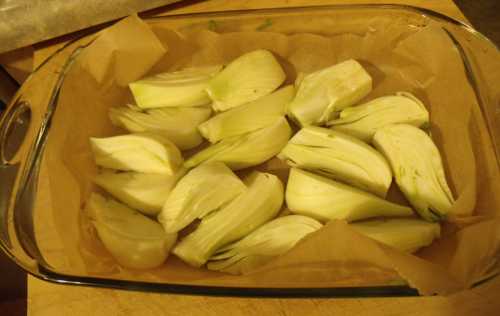- Elizabeth Larson
- Posted On
Harlow: King's life teaches the importance of peace, working the dream

CLEARLAKE, Calif. – It was a moment of simple kindness that turned out to be the beginning of an important and lasting friendship.
A young Charles Harlow arrived in 1949 at Crozer Theological Seminar in Chester, Penn., to take his place at the school.
The father of two had traveled cross country from Portland, Oregon, with wife, Marian, and their two children who became sick with chicken pox. Harlow's children and wife stayed with his mother-in-law on the East Coast as he went on to report to Crozer.
When he arrived at seminary, Harlow was late, had no money and was worried, as he had only six months left on his GI Bill for school.
The first person he met was a young man three years his junior who also was a student there.
The young man's name was Martin Luther King Jr.
“He put his hand out and said, 'May I help you?'” Harlow, 85, and now a resident of Clearlake, recalled.
Together the two young men made their way up to the main lodge, King helping tote his fellow seminarian's bags.
It was the start of a deep and true friendship, one in which the two young men would discuss spirituality and God, faith and humanity.
They wrote papers, studied and prayed together. And Harlow, like other of King's friends, would watch King's majestic and ultimately tragic trajectory as a leading voice in the nation's civil rights movement.
To friends like Harlow, King would remain “Martin,” a man who when he prayed did so “as if he had a personal acquaintance with God,” and cared enough for people to risk – and ultimately lose – his life, a fear his friends had had for him for many years.
King was in Harlow's prayer chain – as was his wife, Coretta – exchanging occasional letters and phone calls with Harlow until King's life was ended by an assassin's bullet on April 4, 1968. He was 39 years old.
While the assassin may have cut short the life of the dreamer, the dream survived, with King leaving his imprint on the nation's heart. The civil rights movement of which he was a part would continue forward under the leadership of many young men and women who shared his vision, ultimately impacting the sensibilities of people of all ethnicities.
Harlow was one of those who worked for equality, a man who says he's radical “but not really” and points out that Jesus of Nazareth never demanded worship, but asked people to follow him on his difficult path, which included loving one's enemies.
“It's far easier to worship Jesus than listen to him,” said Harlow.
Harlow, now retired from ministry with the United Church of Christ, shared his memories of King with Lake County News in an interview on Sunday, the same day that he spoke at the Unitarian Universalist Congregation of Lake County in what one member described as a mesmerizing talk.
Different backgrounds, but a heart for truth
Harlow and King had very different backgrounds, but intellect and interest brought them together.
King was the son and grandson of ministers, raised in the faith and devout. He was a man of huge intellect matched by an equally deep spirit. But the world in which he was born judged him more by the color of his skin than by his abilities.
Harlow was a young white man from the streets of Chicago. He wasn't raised a Christian which, he reflected, was in many ways a benefit. He said it meant he didn't have to unlearn beliefs that may have made his journey of faith more challenging.
“I didn't have anything to unlearn other than the streets,” he said.
At 16 he found himself in the Marines, stationed in the South Pacific before Pearl Harbor.
One night he was standing watch in a village, recalling, “the moon was bright, bright, and the beams of the moon showed the buildings below me.”
The church there was made from pounded sea shells, “and it just glistened” in that bright moonlight, he said.
Harlow was speaking that night to a native man about his belief in Christianity. The man told him that accepting the faith “means that I can stand up and be me.” Harlow said that, to a young man from the streets, that meant something – that he didn't have to be ashamed of who he was.
He started reading and got a New Testament from a chaplain. When he asked where to start, the chaplain suggested the earliest book, written by the Apostle Mark.
“I ran into the Jesus I wanted to follow,” said Harlow.
Later, he came to California on a hospital ship after having taken ill. He recovered, met his future wife Marian – they would raise three children together – and decided he wanted to go to college, although he hadn't attended high school.
He would go on to attend business college and college, with Harlow deciding to attend the seminary, which he did from 1949-1953. King was reportedly at the seminary from 1948 to 1951.
During their time together at seminary, Harlow said he and King talked about Harlow's service in the Marines, as well as more otherworldly questions.
“We talked back and forth a lot about spirituality – what was it, what is it,” Harlow said.
They also would study religious leaders and world figures like Mahatma Gandhi, an important influence for King, according to Harlow.
King was an excellent student, “I mean top drawer,” said Harlow, adding that while he was good, King surpassed him.
“He was always seeking out new approaches to life and to meaning,” Harlow said.
Harlow today remembers that the young King enjoyed life, always was attired in the best suits, and disappeared every weekend to visit Philadelphia.
Later, after seminary, they would exchange letters, Harlow noting regretfully that he didn't keep King's letters, not realizing how famous he would someday become.
King also called him once to ask him to come to Selma, Alabama, where King led marchers in March of 1965. Harlow said he couldn't get there because of his other responsibilities, which he said saddened him.
Harlow and other of King's friends from seminary kept in touch. “We all knew what was happening with him,” said Harlow, including the threats against King and the fears for his safety.
Working the dream
Even as a young seminarian, it was clear that King had big goals. “He wanted to help people be free, everybody knew that. How, nobody knew, neither did he,” said Harlow.
An important lesson King taught the world is how one can make a dream reality. “He worked his dream,” said Harlow. “Not many people work their dream. They just dream.”
Harlow added that a dream “has to have a working edge on it,” otherwise it's mythological, and he believes people are responsible for their dreams and goals, which he said are part of the miracle process of life in which everyone participates.
He pointed out that the original version of King's famed speech given at the Lincoln Memorial as part of the March on Washington in August 1963 hadn't contained the words “I have a dream.”
King was only supposed to speak about eight minutes, and it wasn't until the speech was under way that he decided to improvise and use the “I have a dream” theme. Harlow said it came from a stump speech – much as most ministers, including Harlow, have – that King had given at churches all over the South.
“He had a deep caring process in his life,” said Harlow. “He really cared, and that's a tough one because a lot of people voice terms of caring, but that's all it is.”
King put his life on the line in caring for others, Harlow said. “Not many people find that comfortable.”
He remembered King trying to calm people in January 1956 after his home was bombed in the wake of the Montgomery bus boycott, telling people not to react in violence because they shouldn't allow themselves to lower their expectations.
“He called me one time and I said, 'Martin, is your life insurance paid up?' And he said, 'I don't have any life insurance',” Harlow remembered.
King was aware of the dangers, as did those who knew him. But Harlow believed that King had confronted the idea of his death and was able to walk free of it. Based on their conversations, Harlow said, “Death wasn't bothering him.”
The day before his death, on April 3, 1968, King delivered his “I've Been to the Mountaintop” speech in Memphis, Tenn., in which he referenced threats and warned of “some difficult days ahead.”
“But it doesn't matter with me now,” King said. “Because I've been to the mountaintop. And I don't mind. Like anybody, I would like to live a long life. Longevity has its place. But I'm not concerned about that now. I just want to do God's will. And He's allowed me to go up to the mountain. And I've looked over. And I've seen the promised land. I may not get there with you. But I want you to know tonight, that we, as a people, will get to the promised land. And I'm happy, tonight. I'm not worried about anything. I'm not fearing any man. Mine eyes have seen the glory of the coming of the Lord.”
Today, in light of so much strife worldwide – and especially in the wake of the recent assassination attempt on an Arizona congresswoman and the murders and attempted murders of several of her constituents – Harlow said King's message remains one of peace.
“The bottom line for Martin's life was nonviolence,” said Harlow, imagining that if King had lived – he would have been 82 on Jan. 15 – that he would have been actively engaged in the anti-war movement, and trying to help people live peaceful, meaningful lives.
While some people may want to wait to change the world, said Harlow, “There is no better time to build a peaceful place than right now.”
Special thanks to Kathy Windrem of the Unitarian Universalist Congregation of Lake County for her help in contacting Dr. Harlow for this story, as well as for her picture that accompanies the article.
E-mail Elizabeth Larson at This email address is being protected from spambots. You need JavaScript enabled to view it. . Follow Lake County News on Twitter at http://twitter.com/LakeCoNews , on Facebook at http://www.facebook.com/pages/Lake-County-News/143156775604?ref=mf and on YouTube at http://www.youtube.com/user/LakeCoNews .

 How to resolve AdBlock issue?
How to resolve AdBlock issue? 
















